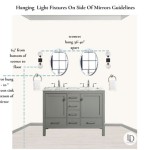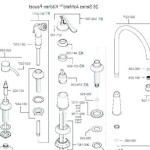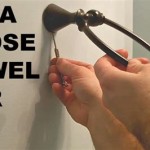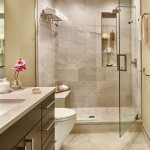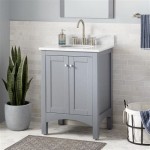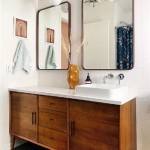How To Replace Hollywood Lights In Bathroom
Replacing Hollywood lights in a bathroom, also known as vanity lights with multiple exposed bulbs, is a common home improvement project. Whether the goal is to update the aesthetic, improve energy efficiency, or address malfunctioning fixtures, understanding the process and taking necessary precautions are crucial for a successful and safe installation. This article provides a comprehensive guide on how to replace Hollywood lights in a bathroom, covering preparation, removal, installation, and troubleshooting.
Preparing for the Replacement
Before commencing the replacement, adequate preparation is essential. This groundwork ensures a smooth and safe process, minimizing potential risks and complications.
Gather Necessary Tools and Materials: A comprehensive toolkit is vital for any electrical project. Essential tools include a voltage tester, screwdrivers (both flathead and Phillips head), wire strippers, wire connectors (such as wire nuts), electrical tape, pliers, and potentially a drill with appropriate bits depending on the mounting requirements of the new fixture. Materials will include the new vanity light fixture, replacement bulbs, and possibly patching compound and paint to repair any wall damage after removing the old fixture.
Prioritize Safety: Electrical safety is paramount. Begin by turning off the power to the bathroom circuit at the circuit breaker. This is non-negotiable and prevents the risk of electric shock. To confirm the power is off, use a voltage tester to check the wires of the existing fixture. Even after turning off the breaker, always assume the wires are live until verified with a tester. Wear appropriate safety glasses to protect the eyes from debris.
Assess the Existing Fixture and Wiring: Carefully examine the existing fixture to understand its mounting method and how the wiring is connected. Take photographs of the wiring configuration before disconnecting anything. This visual record will be invaluable during the installation of the new fixture, ensuring the wires are reconnected correctly. Note the wire colors and their respective connections: typically, black (hot), white (neutral), and green or bare copper (ground).
Choose a Compatible Replacement: Selecting a new vanity light fixture that is compatible with the available wiring and the bathroom's electrical system is crucial. Consider the fixture's size, style, and lighting output. Check the fixture's voltage and wattage requirements to ensure they match the existing electrical capacity. Also, evaluate the mounting requirements; the new fixture should ideally use the same mounting holes as the old one, simplifying the installation process. If this is not feasible, be prepared to drill new holes and patch the old ones.
Removing the Existing Hollywood Lights
The careful removal of the old fixture is a crucial step, ensuring no damage is done to the surrounding area or the existing wiring.
Disconnect the Wiring: Once the power is confirmed to be off, carefully disconnect the wires from the existing fixture. Start by unscrewing the wire connectors (wire nuts) and separating the wires. If the wires are twisted together and taped, carefully remove the tape and untwist the wires. Avoid pulling on the wires, as this could damage the insulation or the wire itself. Use wire strippers to ensure clean wire ends for the new connections.
Detach the Fixture from the Wall: Depending on the mounting method, the Hollywood lights fixture may be attached to the wall with screws, bolts, or clips. Locate these fasteners and carefully remove them. If the fixture is painted to the wall, use a utility knife to score around the edges of the fixture before removing it. This will prevent the paint from peeling off the wall when the fixture is detached. Support the fixture as you remove the last fastener to prevent it from falling and causing damage.
Inspect the Junction Box: After removing the fixture, inspect the junction box (the electrical box in the wall) to ensure it is in good condition. Check for any signs of damage, such as cracks or corrosion. If the junction box is damaged, it should be replaced before installing the new fixture. Also, ensure the junction box is properly secured to the wall studs. A loose junction box can create safety hazards.
Prepare the Mounting Surface: After removing the old fixture, the wall may have visible screw holes, paint imperfections, or residue from the old fixture. Use patching compound to fill any screw holes or imperfections. Allow the patching compound to dry completely, then sand it smooth. If necessary, apply a fresh coat of paint to match the surrounding wall. This will provide a clean and professional-looking surface for the new fixture.
Installing the New Vanity Light Fixture
The installation phase requires precision and attention to detail to ensure the new fixture is securely mounted and properly wired.
Attach the Mounting Bracket: The new vanity light fixture should come with a mounting bracket. Attach the mounting bracket to the junction box using the screws provided. Ensure the bracket is securely fastened and aligned correctly. The orientation of the mounting bracket is important, as it will determine the final position of the fixture. Refer to the manufacturer's instructions for specific guidance on attaching the mounting bracket.
Connect the Wiring: Carefully connect the wires from the new fixture to the wires in the junction box. Match the wire colors: black to black (hot), white to white (neutral), and green or bare copper to green or bare copper (ground). Use wire connectors (wire nuts) to securely join the wires. Twist the exposed ends of the wires together, then screw the wire connector onto the twisted wires. Ensure the wire connector is tight and secure. Wrap electrical tape around the wire connectors to provide an extra layer of insulation and prevent accidental contact.
Mount the Fixture: Once the wiring is connected, carefully mount the new fixture onto the mounting bracket. Align the fixture with the bracket and secure it with the screws or bolts provided. Ensure the fixture is level and securely attached to the wall. Do not overtighten the screws, as this could damage the fixture or the mounting surface. If the fixture is heavy, it may be helpful to have an assistant hold it in place while you secure the fasteners.
Install the Bulbs and Test the Fixture: After the fixture is securely mounted, install the appropriate bulbs. Refer to the fixture's specifications for the correct bulb type and wattage. Once the bulbs are installed, turn the power back on at the circuit breaker. Test the fixture to ensure it is working properly. If the fixture does not turn on, double-check the wiring connections and the bulb installation. If problems persist, consult a qualified electrician.
Troubleshooting Common Issues
Even with careful planning and execution, issues can arise during or after the installation. Addressing these promptly is crucial.
Fixture Not Turning On: If the new fixture does not turn on after installation, the first step is to re-check the circuit breaker to ensure it is still in the "on" position. Next, verify that the bulbs are properly installed and are not burnt out. If the bulbs are good and the breaker is on, re-examine the wiring connections to ensure they are secure and correctly matched. A loose or incorrect wiring connection is a common cause of this issue. Use a voltage tester to confirm that power is reaching the fixture. If power is not reaching the fixture, there may be an issue with the wiring in the wall, requiring professional assistance.
Flickering Lights: Flickering lights can indicate a loose wiring connection or a faulty bulb. Check the wiring connections to ensure they are tight and secure. If the connections are good, try replacing the bulbs with new ones. If the flickering persists after replacing the bulbs, there may be an issue with the fixture itself or with the wiring in the wall. Consult a qualified electrician to diagnose and repair the problem.
Ground Fault Circuit Interrupter (GFCI) Tripping: If the GFCI outlet in the bathroom trips after installing the new fixture, it could indicate a ground fault. A ground fault occurs when electricity is leaking from the circuit to ground. This can be caused by a faulty fixture, damaged wiring, or improper grounding. Turn off the power to the circuit and carefully inspect the wiring connections for any signs of damage or exposed wires. Ensure that the ground wire is properly connected. If the GFCI continues to trip after inspecting the wiring, consult a qualified electrician to diagnose and repair the problem.
Incorrectly Sized or Incompatible Fixture: If the new fixture is either too large or too small for the space, or is not aesthetically compatible with the bathroom’s existing decor, it may be necessary to return the fixture and select a different one. Before purchasing a replacement, carefully measure the available space and consider the overall style of the bathroom. Read online reviews and consult with a lighting professional to ensure the new fixture meets the specific needs and preferences.

How To Replace A Hollywood Light With 2 Vanity Lights

Replacing A Light Fixture On Vanity Mirror

Install A Bathroom Light Yourself Louie Lighting Blog

How To Replace A Bathroom Vanity Light Fixture

How To Replace A Hollywood Light With 2 Vanity Lights

How To Replace A Hollywood Light With 2 Vanity Lights

Light Fixture Upgrade On A Budget Hometalk

How To Replace A Hollywood Light With 2 Vanity Lights

Replacing A Light Fixture On Vanity Mirror

How To Upcycle And Refresh Bathroom Vanity Lights At Blu
Related Posts

